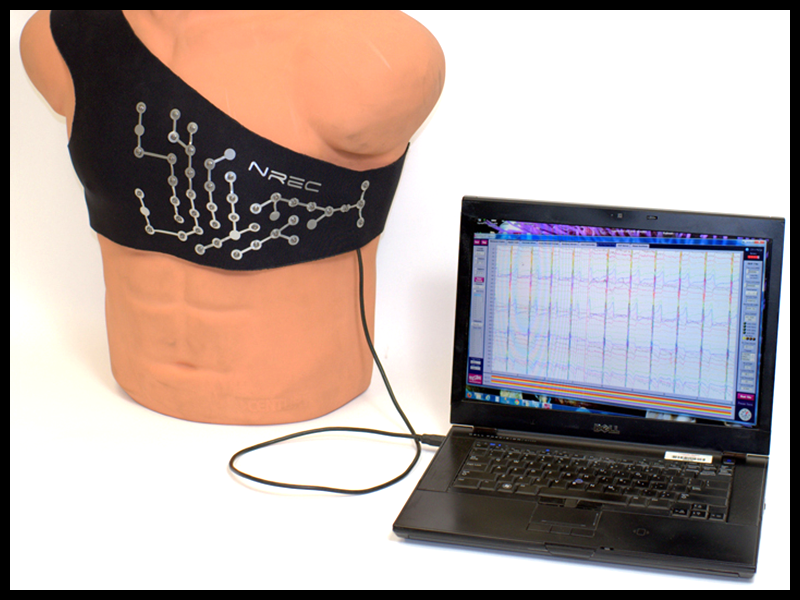Intelligent Electrocardiogram
An intelligent portable electrocardiogram (ECG) can automatically diagnose arrhythmias that could lead to sudden cardiac death (SCD).
Researchers from NREC and the Allegheny Health Network developed the Next Generation ECG, which employs state-of-the-art signal capture and machine learning technologies to detect and diagnose dangerous heart rhythms. Its intelligent diagnostic software and ability to record high frequency cardiac rhythms help doctors to identify patients who are at risk for SCD.
Application
Sudden cardiac death (SCD) is one of the most common causes of death around the world, causing more than half of all deaths from heart disease. It’s estimated to claim nearly seven million lives per year, 325,000 in the United States alone.
SCD occurs when the heart’s electrical system falters, causing its rhythm to become irregular and leaving it unable to pump blood.
Unfortunately, the current generation of ECGs and other diagnostic tools cannot accurately predict which patients will suffer these dangerous arrhythmias. Many patients who are at high risk for SCD are not identified until it’s too late. Some high-risk patients are not given a wearable or implantable defibrillator; some low-risk patients are. The result is both unnecessary deaths and unnecessary over-treatment.
Our Next Generation ECG technology aims to improve the ability of doctors to diagnose dangerous arrhythmias and determine which patients are at a higher risk for SCD.
Capabilities
The Next Generation ECG has several advanced features that are not found in the current generation of ECGs.
More electrodes
The patient interface collects cardiac data via 60 electrodes; current ECGs use 12. The additional electrodes give doctors a more detailed picture of the heart’s electrical activity. The electrodes are mounted on a vest instead of being individually attached to a patient. Patients simply wear the vest during tests.
Enhanced signal range
Our new vest incorporates sensors that are normally used to record electrical signals in the brain. It is far more sensitive than current ECGs and can capture faint electrical signals that today’s ECGs are unable to detect. It also records electrical signals across a much wider range of frequencies. The device records cardiac signals up to a frequency of 2 kHz (as opposed to 150 Hz in most standard ECGs). This allows it to capture subtle, high-frequency signals that ordinary ECGs cannot. The expanded information about the heart’s electrical activity offers better insight into abnormal heart rhythms.
Improved data capture
The current generation of ECGs is designed to record electrical signals for visual inspection by a healthcare professional. In contrast, our new ECG hardware is optimized to record electrical signals for software analysis. It stores more data that’s associated with the heart’s electrical signals and does not filter the raw signals. This gives the Next Generation ECG intelligent diagnostic software more detailed information about the heart.
Automatic diagnosis
The Next Generation ECG software learns how to recognize dangerous arrhythmias through exposure to a large set of recorded cardiac data. Signals are recorded from a wide variety of patients at different stages of heart disease, including patients who have suffered dangerous heart rhythms associated with sudden cardiac death (SCD).
The Next Generation ECG associates patterns in the recorded cardiac signals with clinical diagnosis and other health factors. When it encounters new patient data, it uses its training to find similar patterns – and accordingly comes up with a diagnosis and risk assessment for SCD.
